Since I promised to try to mix in a few habitat shots, here's the scenery from our vehicle as we approached Anjaha:
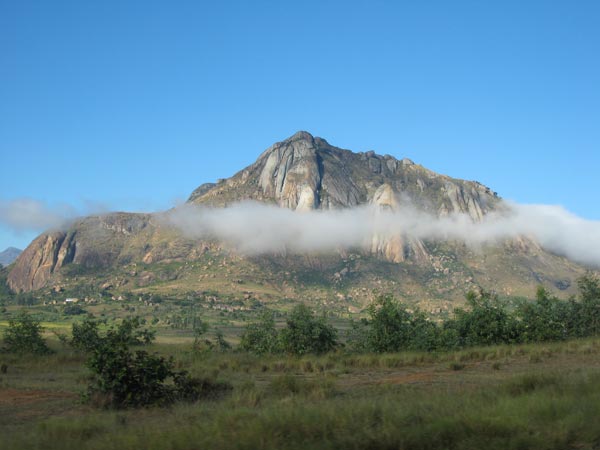
And here's a photo that shows the nearly the entire Anjaha reserve from the parking area. There seems to be something worth photographing in that one tree in the parking area. More on that later.
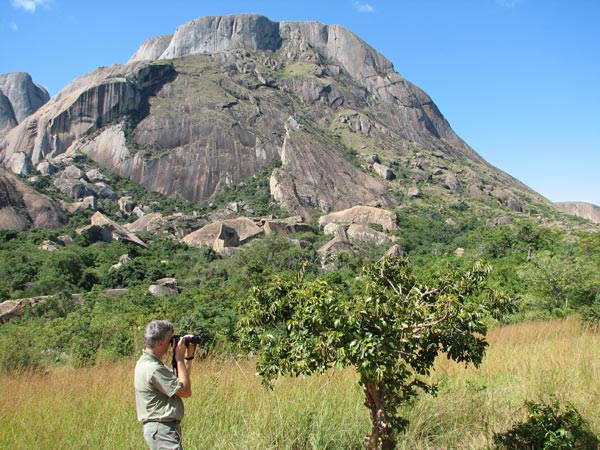
We came to Anjaha primarily to see the ring-tailed lemurs, so I should throw in a couple of lemur shots. The first bunch of lemurs we saw were hanging out in trees.
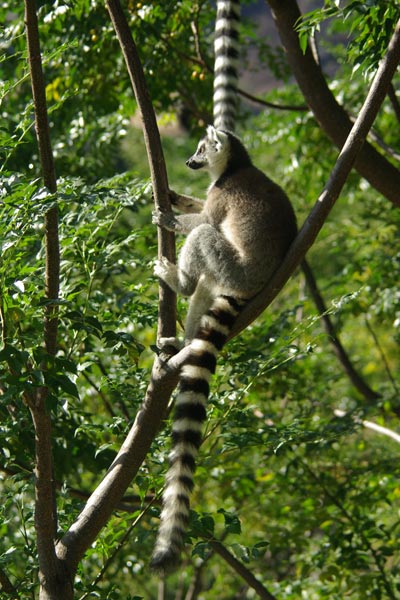
Later we saw more clambering around on the huge rocks. This one was casually strolling across a very thin ledge on a nearly vertical rock surface.
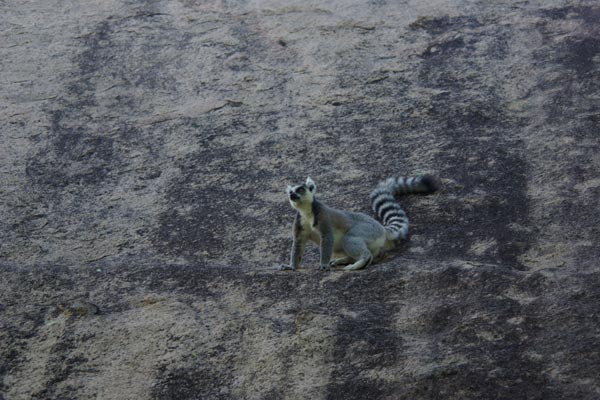
We finally got a chance to photograph the snake Liopholidophis lateralis after seeing two of them briefly in Andasibe. This one had been captured by the local guide after he realized that I was interested in the herps. I settled it down in a cleared area before photographing, much to the excitement of a few small local children who were watching the funny foreigners. Liopholidophis are basically the gartersnakes of Madagascar. They are usually found in or near water; they eat a lot of frogs and fishes; they're common in their habitats; and they're about the size and shape of gartersnakes.
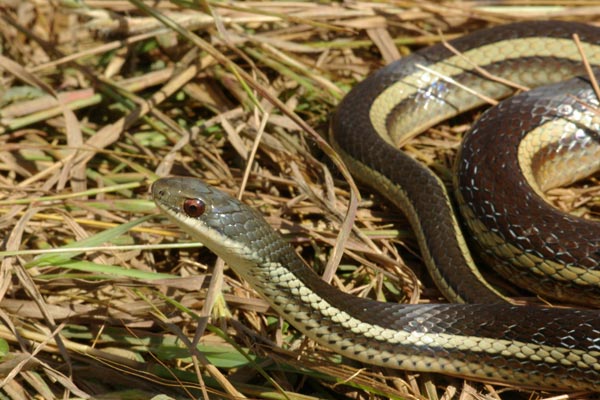
While we were grubbing around in the dead leaves looking for Brookesia, I noticed a frog jump and chased it around for quite awhile before finally getting it to settle for some photos. I thought it must be a good find because it was very distinctive and definitely not a species we had seen earlier in Andasibe. It looked like a small leopard frog with a stripe down its back. Later I discovered that it's by far the most widespread and common frog in Madagascar, and we saw dozens elsewhere. Ah well, it was still pretty.
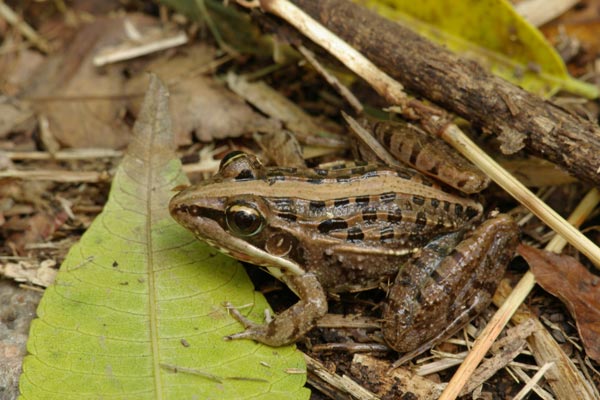
And speaking of common herps, now it's time for the obligatory Zonosaurus madagascariensis photo. This one was huge, probably about 7 inches SVL, and with a long tail on top of that. He was on a rock ledge, sort of looming over the trail, so he got a looming sort of picture.
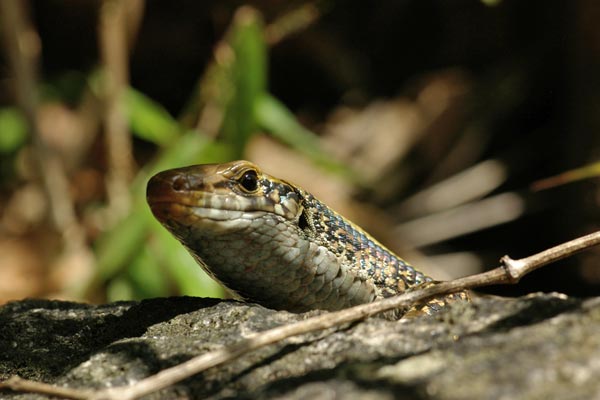
The most obvious herps at Anjaha were the iguanian lizards Oplurus quadrimaculatus crawling all over the rocks. These looked and behaved like giant Sceloporus.
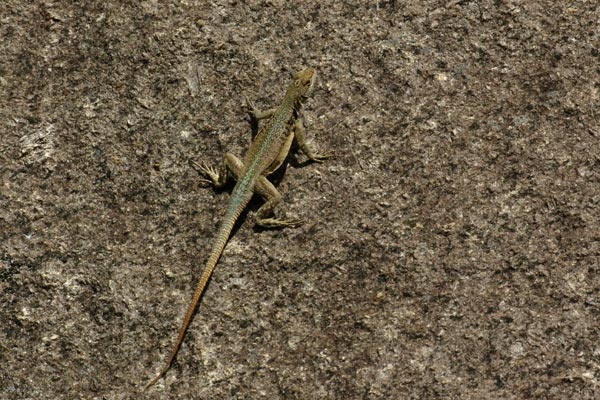
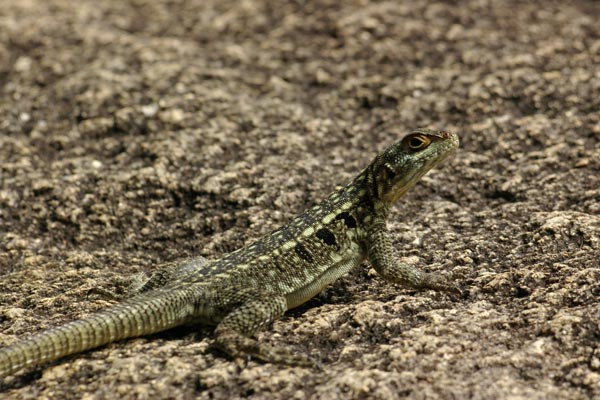
I spotted one little Lygodactylus gecko sharing the rocks with the huge Oplurus. I'm not completely confident of its species ID.
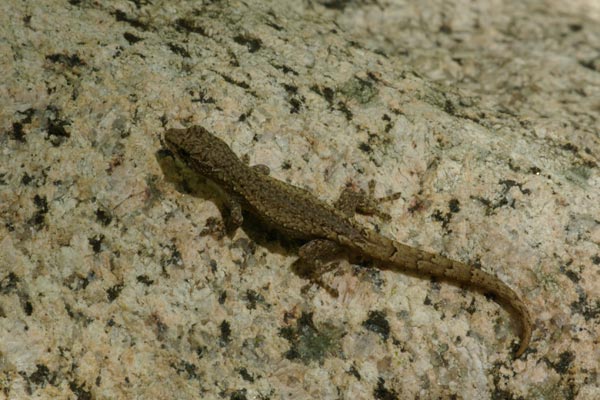
Since this was Madagascar, there were chameleons. The common species in this area is Furcifer lateralis, and we saw four or five of them. Some individuals are mostly green, and others have all sorts of wild colors. The females can be even more wildly colored than the males, but I don't know whether the three individuals in these photographs can be sexed just from these photos.
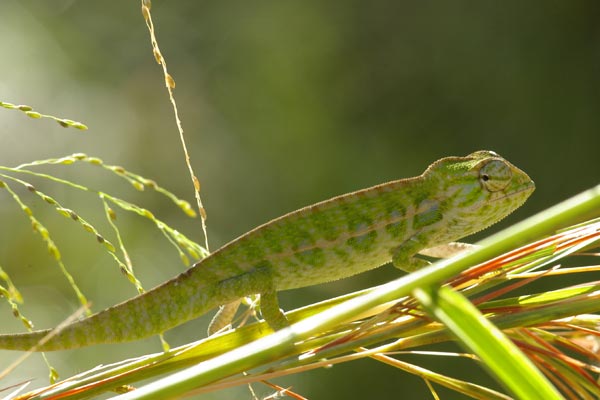
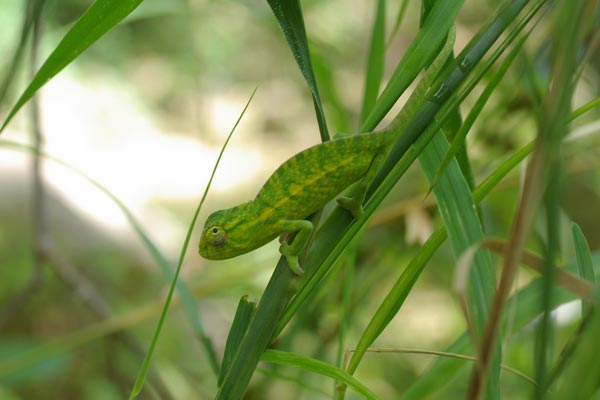
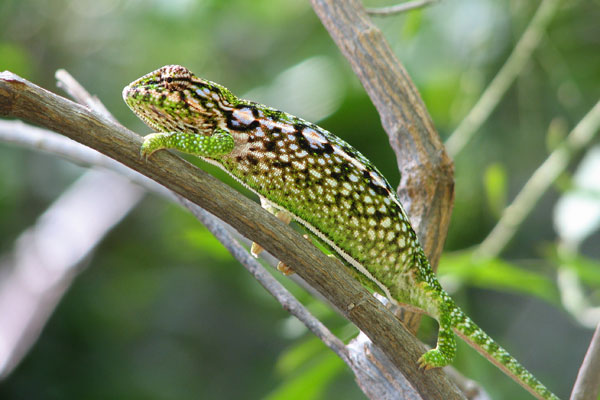
While we were admiring the ring-tailed lemurs and the more common lizards, our guides were staring closely at the ground and riffling through piles of dead leaves trying to find us a little Brookesia chameleon. When we were just about to leave, one guide shouted the Malagasy equivalent of "Eureka" and showed us this little gem. It can be hard to tell Brookesia species apart, especially for tiny babies, so I might have gotten this one wrong. However, I think it's Brookesia ebenaui based on the shape of the dorsal ridge spines, the pelvic shield, and the apparent presence of lateral spines at the base of the tail (only ambiguously and barely visible in this photo). Our guide thought it might be Brookesia decaryi, but that species is known only from one small area in northwestern Madagascar, and Anjaha is in the south. I'd love to hear other opinions.
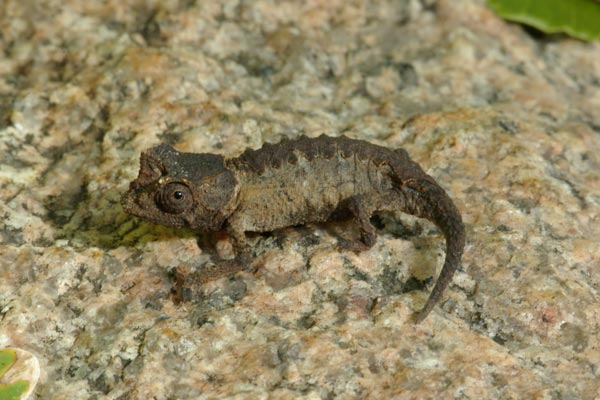
Finally, the solution to the "what's worth photographing in that tree" puzzle from the start of this post. Up in the dirt parking lot grew a lone small tree. In that tree lived a lone monstrously huge chameleon. This is either the largest or second-largest chameleon species (remember I said that about Calumma parsonii also, in my first post from this trip), and this was the first and largest individual we saw on our trip. We ended up seeing a dozen or so more of this species in the north, but none as huge as this fellow.
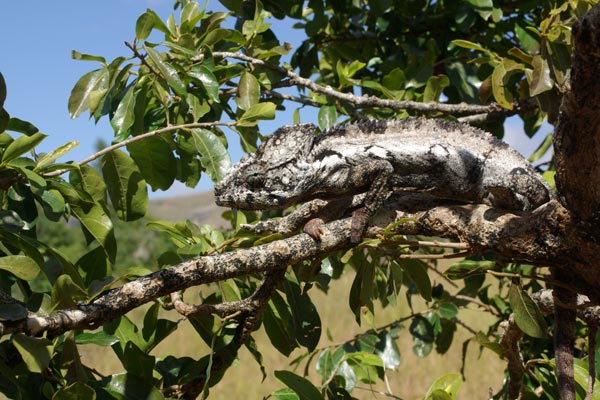
Not bad for a couple of hours intended primarly for lemur viewing.
Next: Ranomafana